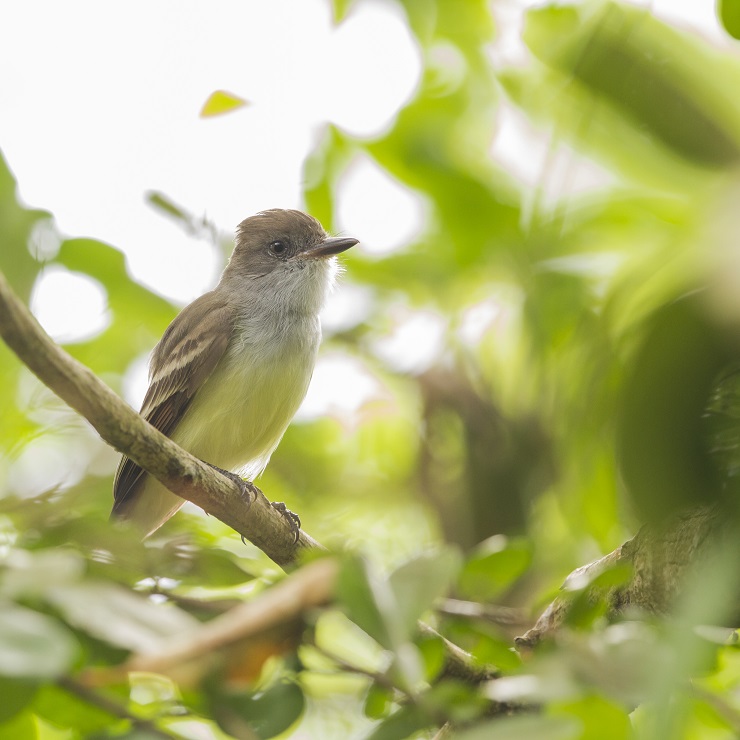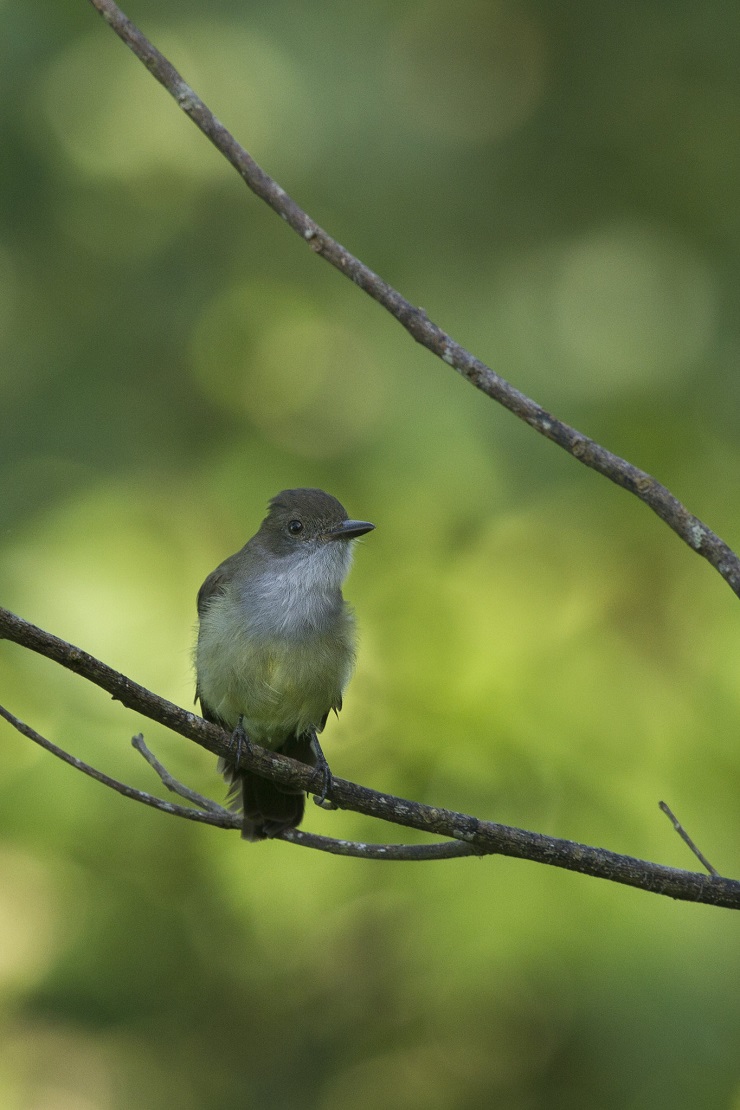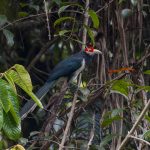
As is my self-declared tradition of speaking of groups of birds within the species gamut of Trinidad & Tobago, allow me to introduce you to yet another group of three. While the entire Tyrannidae family of Tyrant Flycatchers is massive, the Myiarchus group of those recorded on these two islands comprises just three species. Simple and straightforward enough, right? Notorious for being difficult to identify, the ideal situation would be to have no possible overlap of species. Then we could (superficially at least) be lazy and strike one or the other off the list based on location, habitat, or time of year (as we are wont to do with snipes).
Alas – both Trinidad and Tobago each have two Myiarchus flycatchers. One is found on Trinidad only, the other on Tobago only – and the third is found on both islands. Does habitat overlap? Considerably.

The smallest and slightest of the three is the Dusky-capped Flycatcher, which is found on Trinidad only. It tends to favour forests above 300m, although it is known to wander a bit.

Found on Tobago only is the similar loooking Venezuelan Flycatcher.

In forest (particularly lowland) and mangrove swamps on both islands, one can find a Brown-crested Flycatcher or two.
Kudos to you if you are able to notice the differences among the three species just from looking at these pictures. In the field, the real-time evaluation process can take significantly longer, especially if the visuals are less than ideal. The perfect situation of course is for the birds to vocalize, as each is quite distinct.
Many years ago while birding the mid-elevation forests of central Trinidad, we found a flycatcher which remained silent. It seemed larger and bulkier than the Dusky-capped Flycatchers which were in the vicinity. Yet it didn’t have the rufous or fleshy tones of the Brown-crested Flycatcher. Some were suggesting Short-crested Flycatcher – but without confirmation of the vocalization or any better views it remains yet another Myiarchus mystery.

Any opinions on this, other than it being a bird?
If you’re so inclined to check out previous articles on these groups of threes that seems to be a reoccurring theme in T&T ornithology, here’s a list for your convenience:
Bitterns | Trogons | Antshrikes | Spinetails | Manakins | Hermits | Honeycreepers | Warblers













I feel your pain, Faraaz. In fact, I feel it very personally. We have four Myiarchus flycatchers in my neighborhood. I’ve gotten very good at looking at tail color patterns.
FOUR?! I’d have a headache every day. Tail patterns, primary edging, subtle variation in ending pitch of a specific vocalization, sigh. Truth is, as much as I complain, I do relish ‘difficult’ birds as they always present opportunities to learn.
I can also see 10 Empidonax flycatchers within an hour of my home… but only three gull species, so I guess there’s that.
Blessings must be counted.